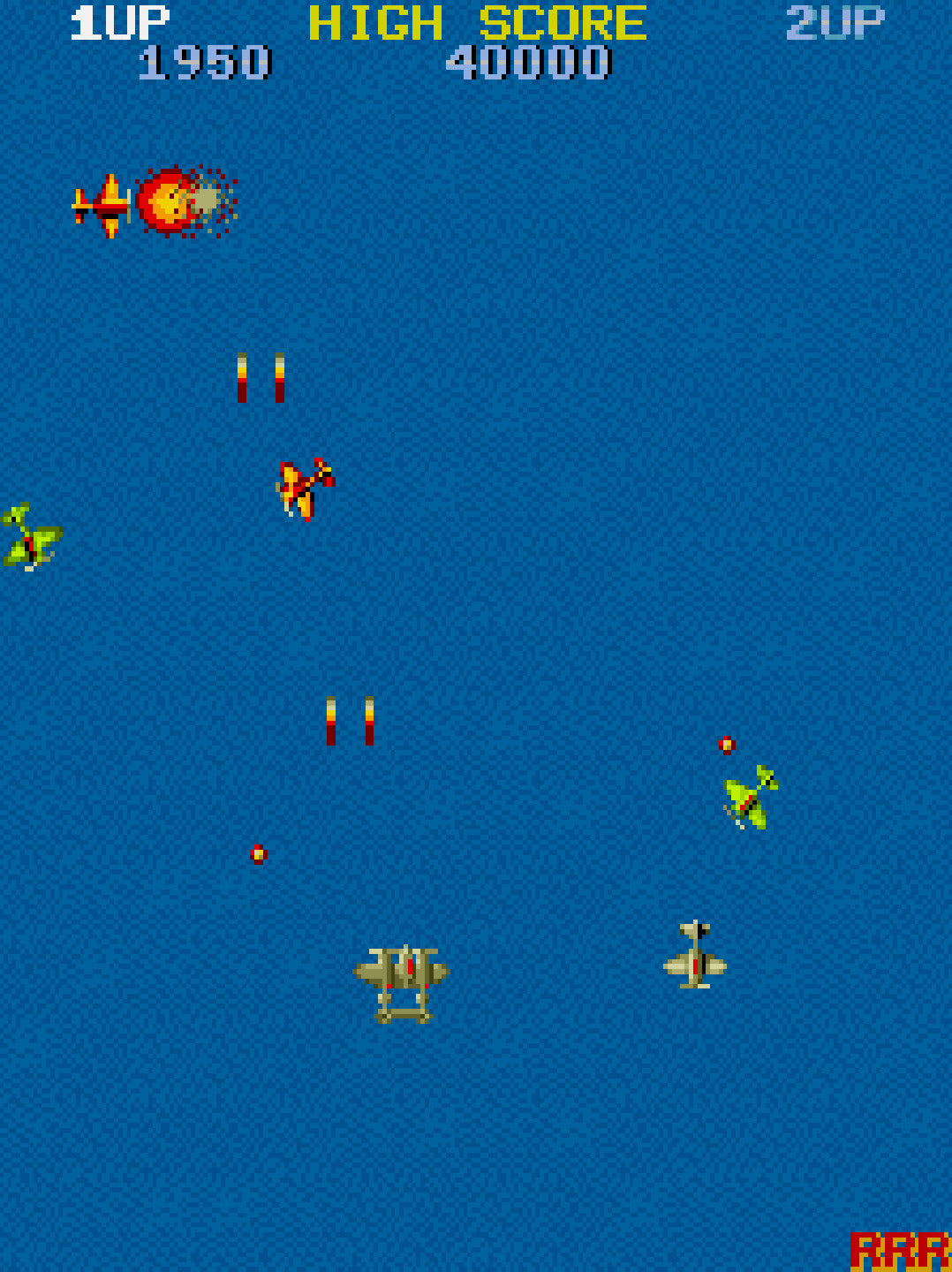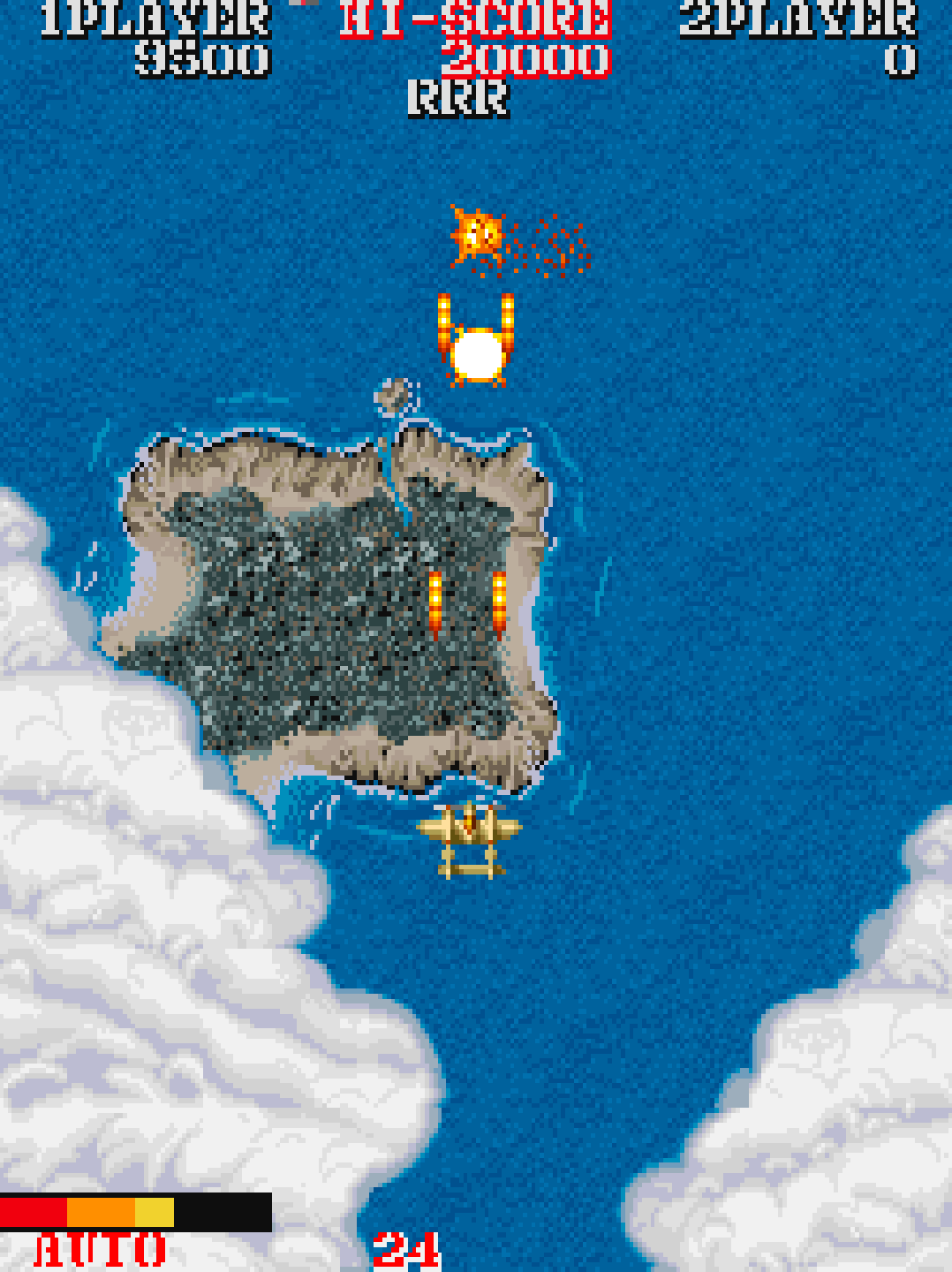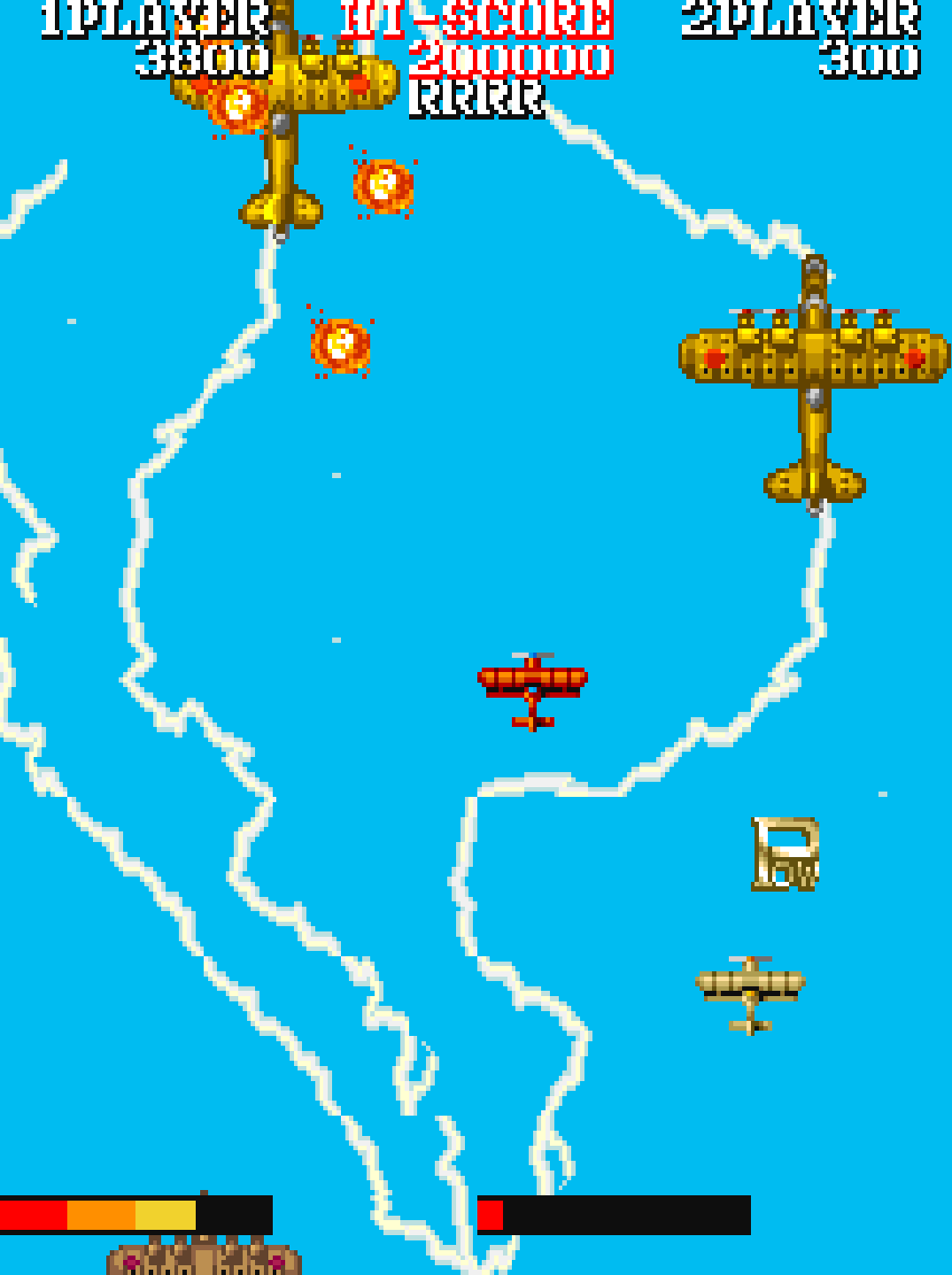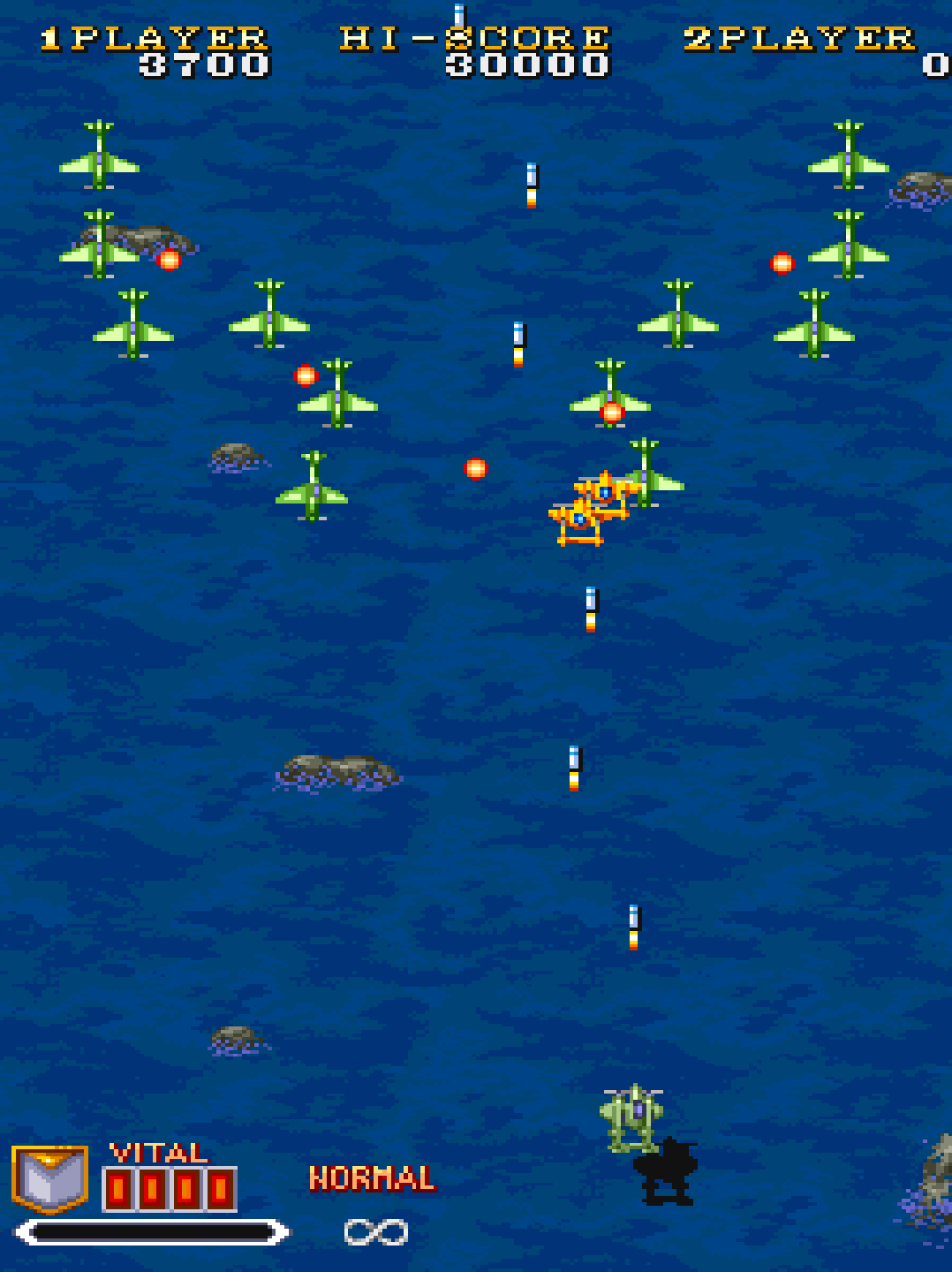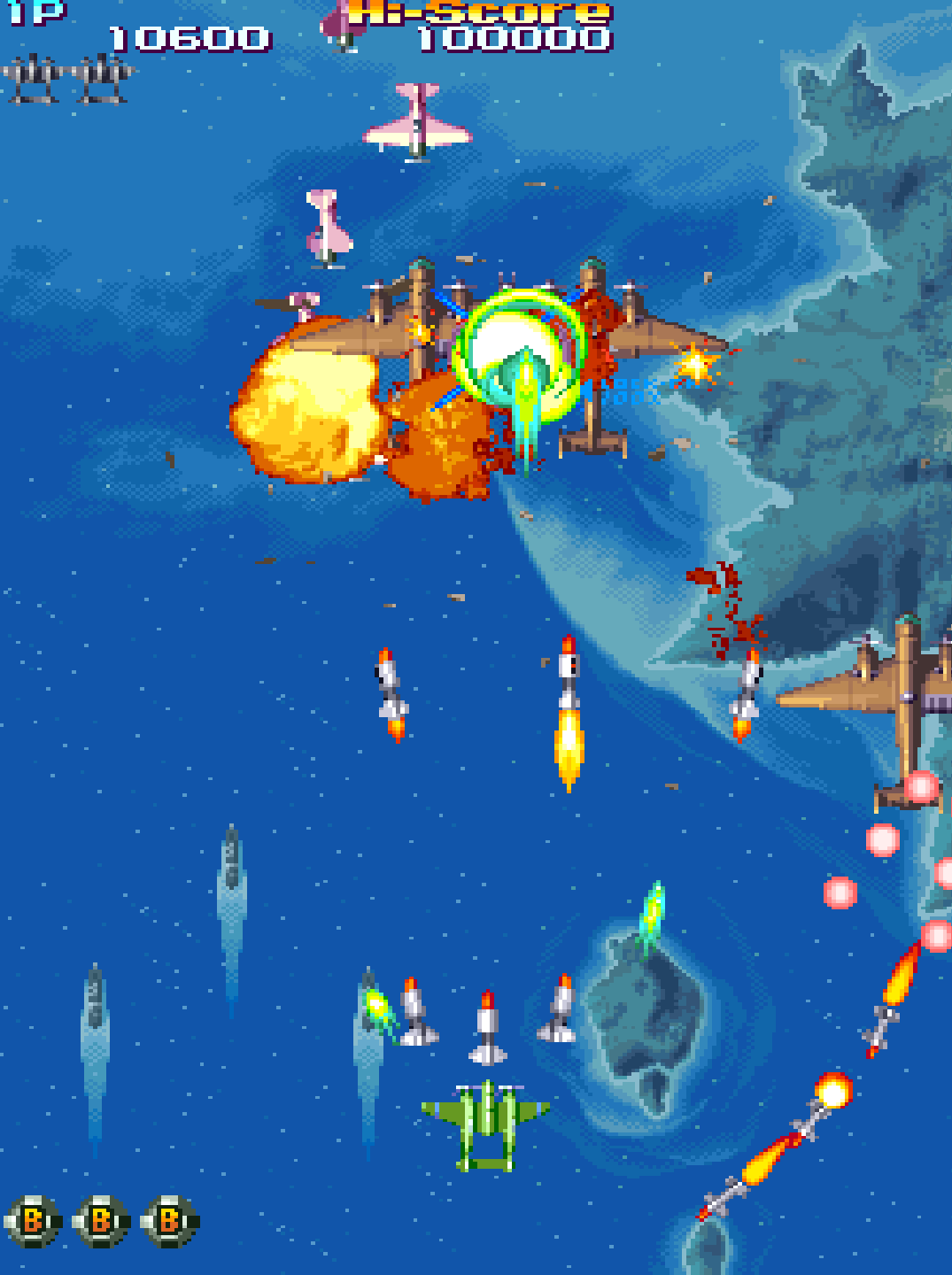Introduction:
In 1984, Capcom released 1942, a vertical-scrolling shoot-’em-up that would become the company's first major international success. At a time when arcades were dominated by space shooters and maze-chase games, 1942 introduced a grounded WWII aesthetic, tight controls, and a new mechanic that let players loop their plane out of danger. What began as a modest title born from Capcom’s desire to appeal to Western players soon evolved into a five-game legacy—one that helped define the vertical shooter genre across three arcade generations.
Spanning from 1942 to 19XX: The War Against Destiny, the 19XX series was Capcom’s evolving answer to both player expectations and technological change. Each entry introduced new systems—energy meters, charge shots, selectable aircraft—and was built on progressively more powerful arcade boards, culminating in a visual and mechanical crescendo on CPS-2 hardware.
This article dives deep into the history, gameplay evolution, cultural impact, and enduring legacy of the 19XX series. Whether you're a die-hard shmup fan or discovering the genre for the first time, this is your ultimate guide to Capcom's pioneering wartime shooter saga.

1. 1942 (1984): Capcom’s International Breakthrough
- Notable Innovations: Loop maneuver (evasive roll), Pacific Theater setting, 32 stages
- Player Aircraft: P-38 Lightning
- Context: Created specifically to appeal to Western arcades, with players ironically taking on the role of an American pilot battling Japanese forces—developed by a Japanese studio.
1942 became an instant hit thanks to its straightforward mechanics, satisfying progression, and accessible difficulty. It established the top-down shooter format that Capcom would iterate on for over a decade.
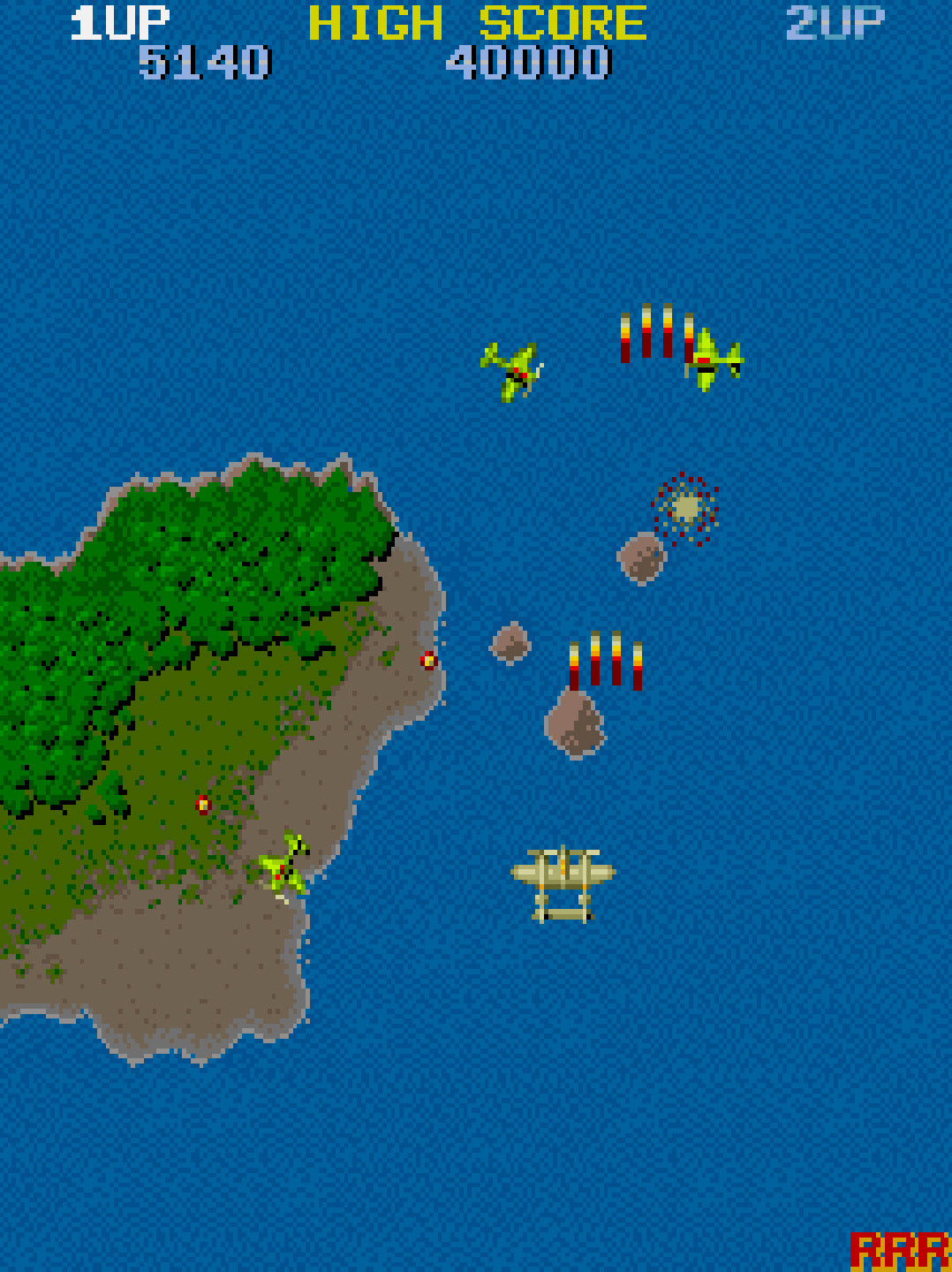
2. 1943: The Battle of Midway (1987): Energy Bars and Naval Warfare
- Platform: Capcom arcade hardware
- New Features: Energy bar replaces lives, naval boss battles, thunder attack, power-ups
- Multiplayer: 2-player simultaneous play
1943 represented a bold shift in structure, replacing traditional “lives” with an energy meter that depleted with hits or special attacks. It introduced large enemy warships as bosses and a deeper scoring system, giving the series strategic depth without sacrificing its accessibility.
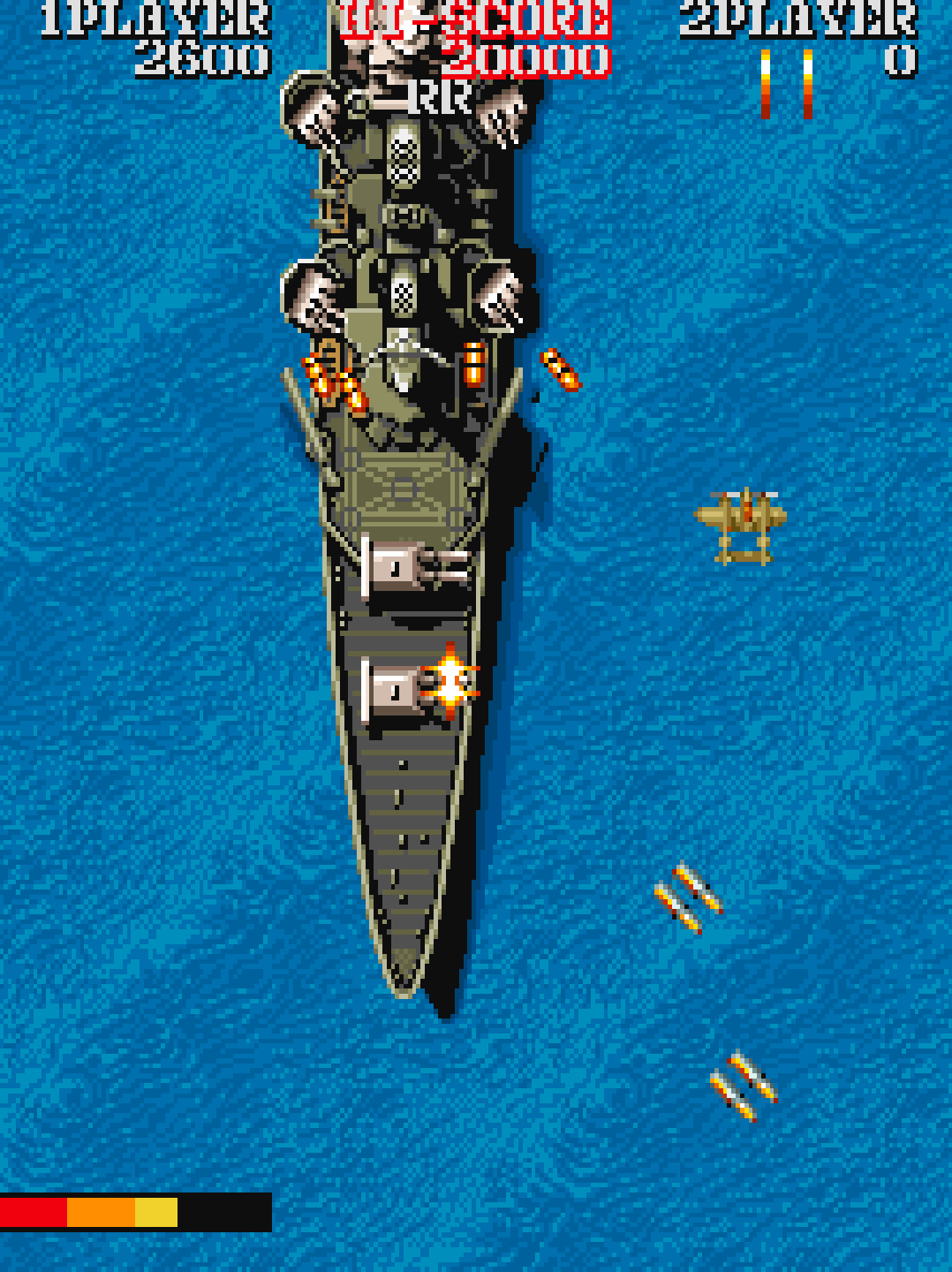
3. 1943 Kai: Midway Kaisen (1987): The Hardcore Remix
- Platform: Capcom arcade hardware (Japan only)
- New Features: Faster pace, new stage layout, more aggressive enemies, enhanced soundtrack
- Multiplayer: 2-player alternating play
A Japan-exclusive remix of 1943, Kai amped up difficulty, overhauled enemy formations, and offered an upgraded soundtrack. Though lesser known in the West until recent re-releases, Kai is a fan favorite for its challenging design and refined mechanics.
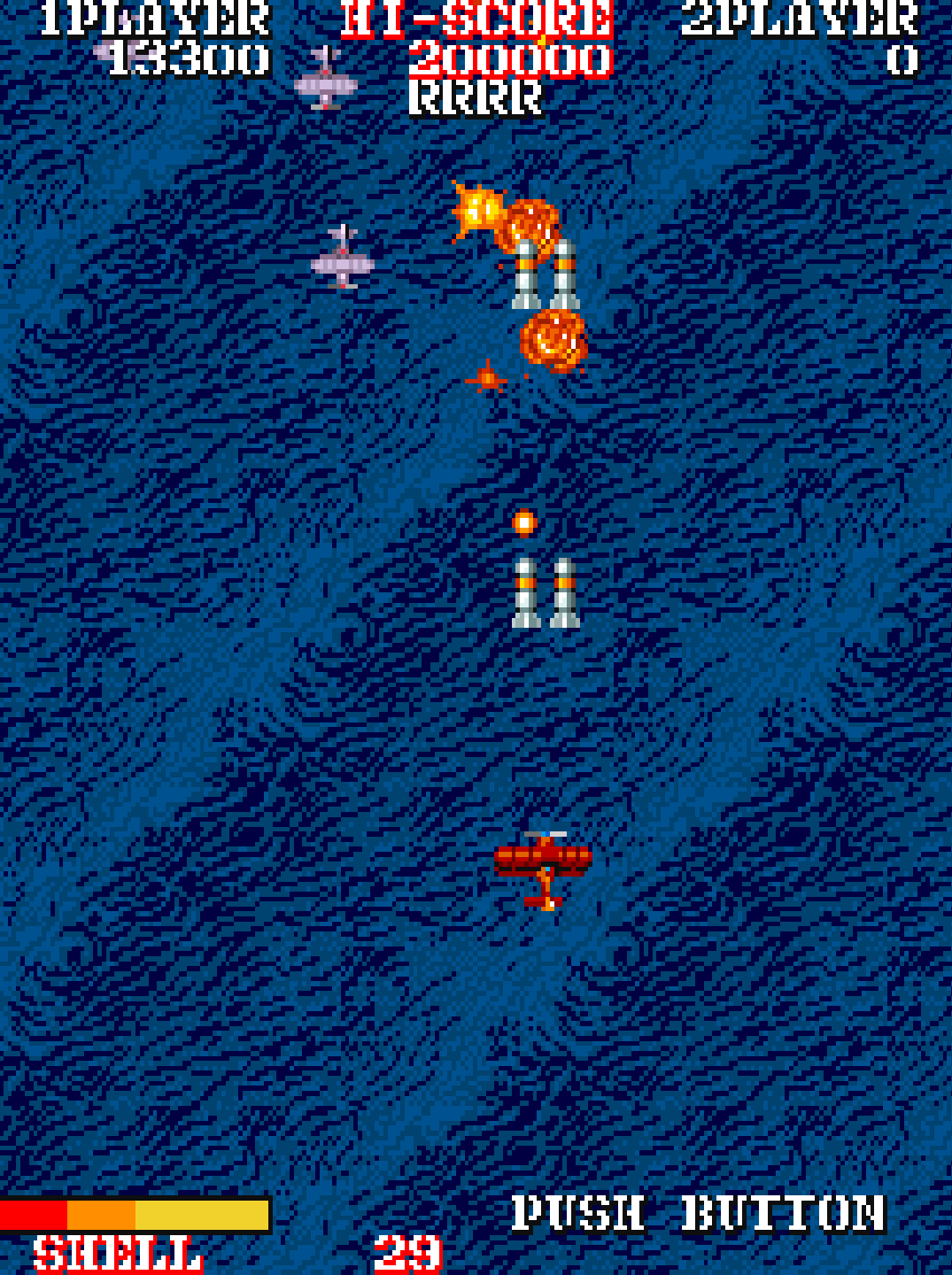
4. 1941: Counter Attack (1990): CPS-1 Hardware, Charge Shots, and Co-Op Play
- Platform: CPS-1
- New Features: Charge shot mechanic, energy bar returns, loop maneuver updated, 2-player co-op
- Selectable Plane: P-38-inspired fighter with new combat flexibility
The first title in the series to run on Capcom's CPS-1 board, 1941 modernized the feel of the series. The addition of charge shots and tighter enemy formations pushed the game into faster, more skill-intensive territory. Its two-player co-op introduced coordinated gameplay dynamics that became a series hallmark.
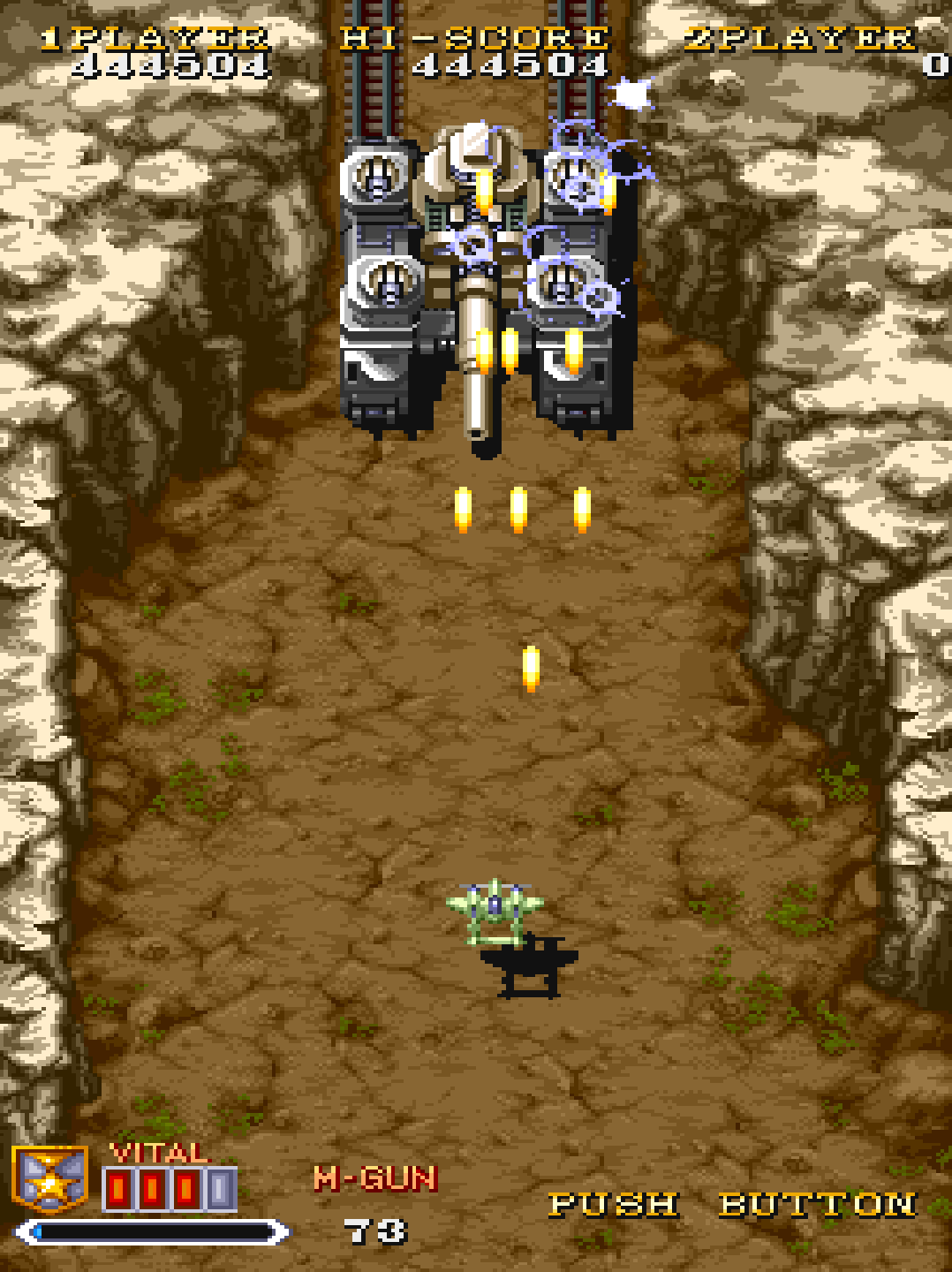
5. 19XX: The War Against Destiny (1995): Capcom’s CPS-2 Masterpiece
- Platform: CPS-2
- New Features: Three selectable aircraft, advanced ranking system, charge shot, bomb attack, multiple endings
- Multiplayer: 2-player simultaneous play
The final arcade installment, 19XX, is widely considered the series' most polished entry. Featuring slick CPS-2 visuals, branching paths, and a high-skill ceiling, it gave players unprecedented control through aircraft selection and a refined resource system. The ranking mechanic encouraged careful play and replayability, while the narrative leaned into an alternate-history war fantasy.
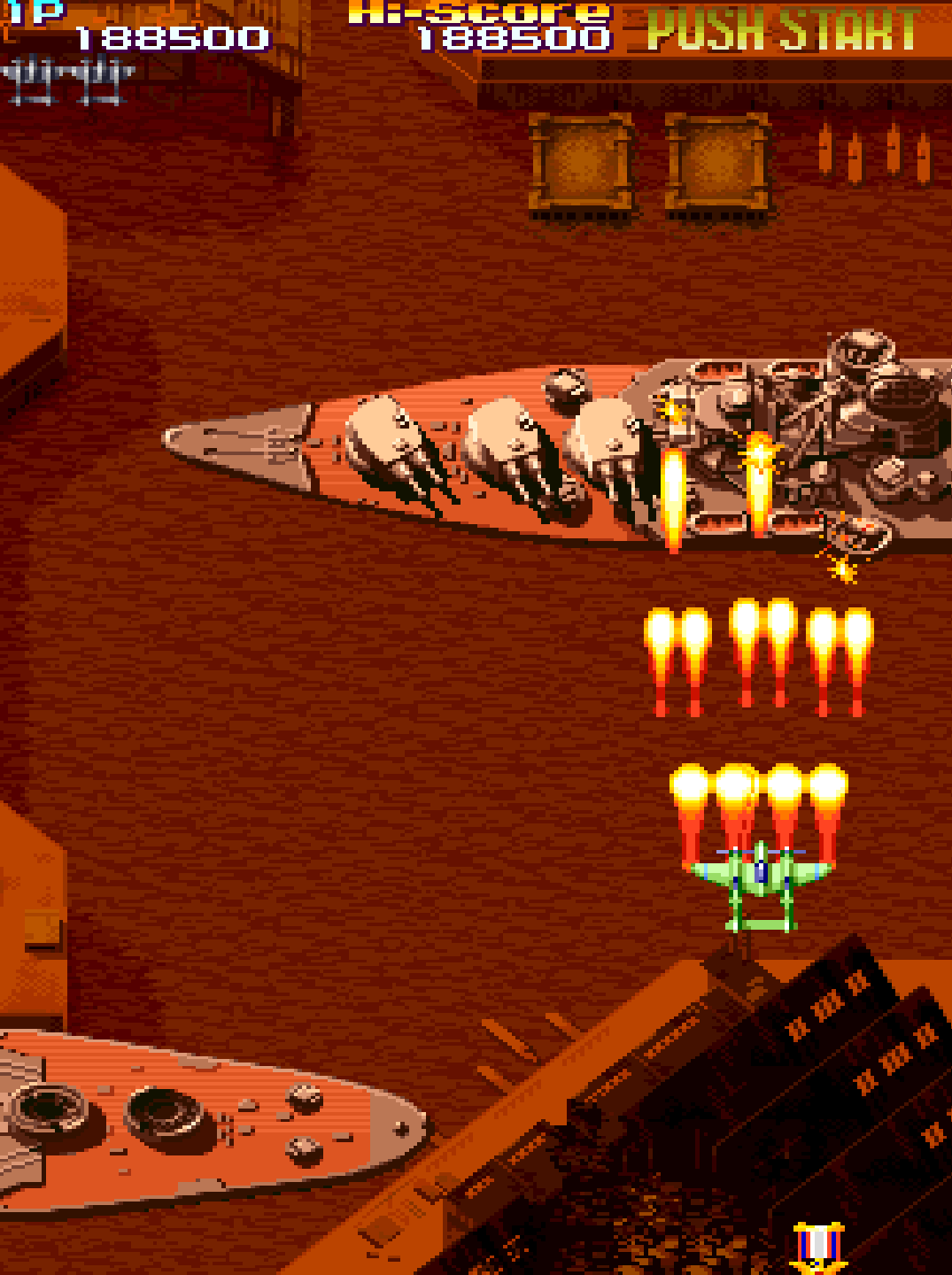
6. 1944: The Loop Master (2000): The Console-Style Revival
- Platform: CPS-2
- New Features: Eight stages, enhanced combo scoring, simultaneous 2-player co-op, cinematic presentation
- Developed by: Capcom in collaboration with 8ing/Raizing
Though not always included in the core 19XX arcade lineage, 1944: The Loop Master serves as a spiritual continuation of the series. Released in 2000 and developed by 8ing under Capcom’s direction, 1944 featured vibrant CPS-2 visuals, simplified mechanics, and a more console-style experience. It introduced a regenerating life bar and more cinematic level transitions, helping bridge old-school arcade roots with modern shooter sensibilities.
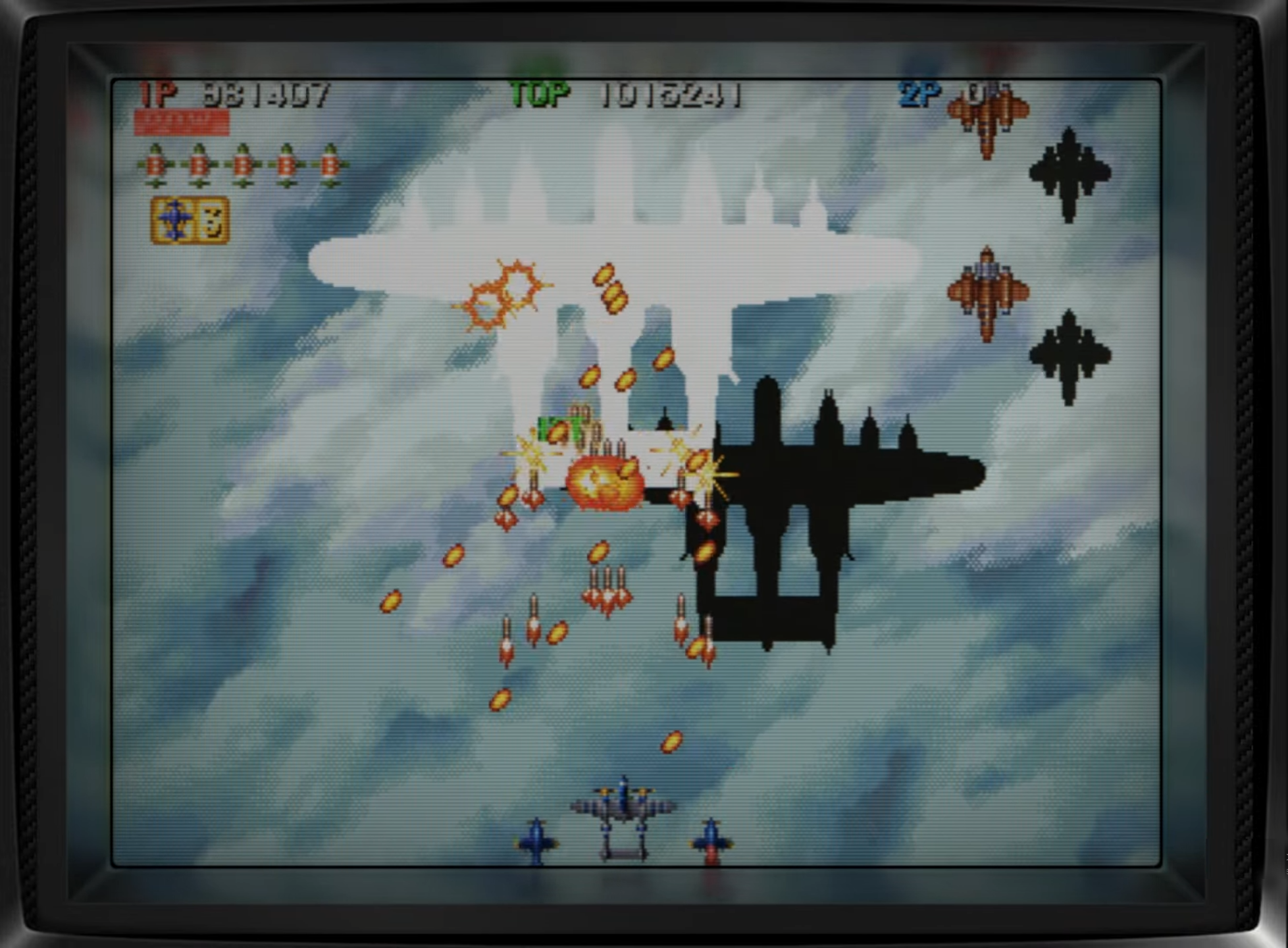
Key Themes and Innovations Across the Series
- From Simplicity to Strategy: The series evolved from one-button reflex shooting to deeper systems like energy management, power customization, and score optimization.
- The Loop Mechanic’s Legacy: Present in every game in some form, the loop/dodge roll remains a signature survival tool.
- Energy vs. Lives: Transitioning away from 3-lives format gave players a more dynamic health system.
- Hardware Evolution: From basic Capcom boards to CPS-2, the graphics, music, and gameplay responsiveness steadily improved.
- Historical Fiction: While loosely based on WWII, the series consistently balanced realism with arcade spectacle—culminating in fictional aircraft and fantastical boss designs.
Why the 19XX Series Still Matters
Capcom’s 19XX series didn’t just ride the arcade wave—it helped shape it. The series’ ability to continuously reinvent its mechanics while retaining a clear identity is rare in arcade history. Its influence can be felt in later Capcom shooters like Giga Wing and Progear, and its games remain staples in arcade collections and retro eShops.
For genre enthusiasts, the 19XX series offers a study in pacing, design, and balance. For casual players, it provides a thrilling, beautifully crafted experience that reflects the best of 1980s and ’90s arcade ingenuity.
Where to Play the 19XX Series Today
- Capcom Arcade Stadium (Nintendo Switch, PS4, Xbox, PC): Includes 1942, 1943, Kai, and 19XX
- Capcom Classics Collection Reloaded (PSP): Includes 1942 and 1943 Kai
- Various Capcom arcade cabinets and compilations
Conclusion
The 19XX series is more than a string of shoot-’em-ups—it's Capcom's blueprint for how to evolve a game across generations without losing its soul. Whether you're dodging bullets in 1942, mastering charge shots in 1941, or climbing the ranks in 19XX, the series delivers arcade intensity with unmatched historical flair.
Even 1944: The Loop Master, developed several years after the core arcade series, carried the spirit of the originals forward with cinematic flair and updated mechanics. As vertical shooters continue to inspire indie devs and collectors alike, Capcom’s 19XX series remains a gold standard for design, challenge, and staying power in a genre that never truly died—it just kept scrolling.
Related Pages
- What Makes an Arcade Game Great? – A deep dive into the design principles behind the most unforgettable cabinets of all time
- Inside the Metal Slug Legacy: The Developers Who Made It a Classic – How a small team at Nazca crafted one of the most iconic run-and-gun series of all time..
- The Complete History of Mortal Kombat Arcade – How a gritty fighter became a pop culture phenomenon.
- The History of Beat ’Em Up Arcade Games – From Double Dragon to Final Fight, here’s how brawlers ruled the late ’80s.
- The Complete History of Space Shooter Arcade Games – The genre that launched arcades into orbit.

